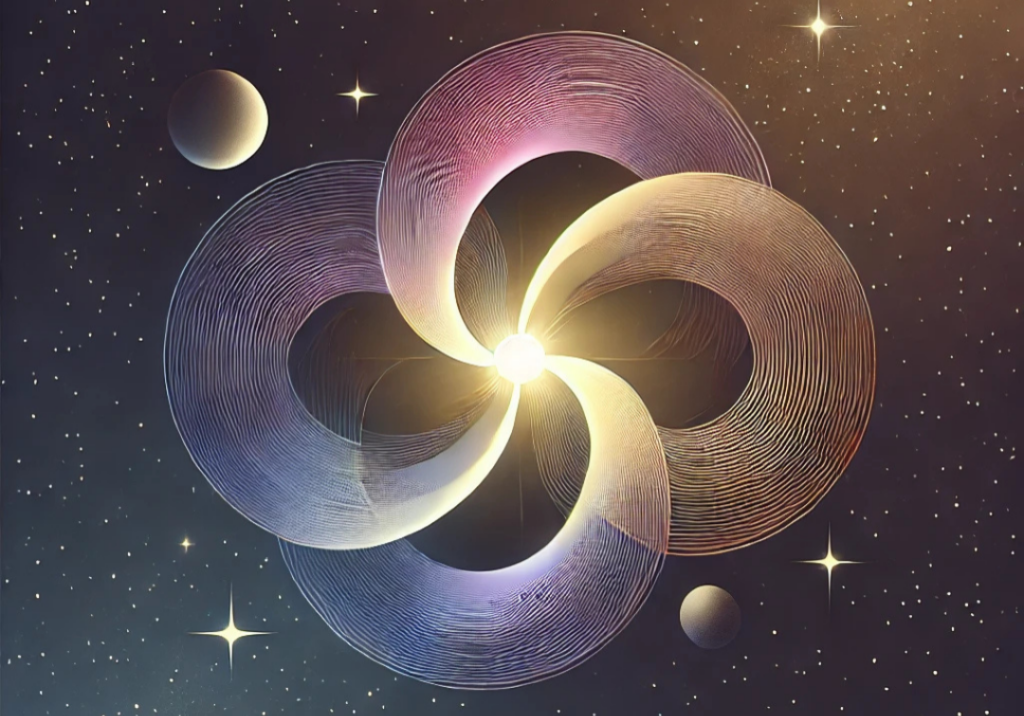Art Disrupts the Senses
“I am always optimistic concerning things that most people think can’t be done.”
Albert Barnes
Dear Friends,
We just presented our recent Annual Conference, this year titled “God 2.0: Pantheism and Quantum Reality”. This meant a trip for me to Philadelphia to collaborate with our Center for Christogenesis team and to create in real time.
I live on the East Coast of Canada, so I was sure to allow time for flight delays. Gratefully advanced planning meant I arrived in Philadelphia early and could squeeze in a quick visit to the Barnes Foundation Art Museum, before heading to the Conference venue.
Flashback to 1994 – the Barnes Art Collection was touring in Toronto. At that time, I was the same age as my daughter is today and I was working at the Art Gallery of Ontario. That Exhibition, the visitors and the Collector made such an impact on me. I learned to observe with new eyes, to witness and see beauty in life’s ordinary sacred occurrences.
The Open Society Organization suggests, “Imagination is the ultimate disrupter. Whether through film, music, dance, or other mediums, art provides space for collective imagination. When faced with unjust systems that seem insurmountable, imagination can encourage us not only to aspire to achieve change, but to actively pursue it.”
Today at the Center for Christogenesis, I find myself working for an organization that interrupts.
Although the Center is about religious convergence, scientific integrity and how we share in each other’s evolution. We are challenging the norm of what it means to live beyond institutional religion and to see differently how we can unify and look to the future evolution of God in our lives.
As the collector Barnes himself reflects, “To see as the artist sees is an accomplishment to which there is no short cut, which cannot be acquired by any magic formula or trick.”
Is it the same when we look to see God?
Dr. Barnes’ collection at the Foundation’s Art Museum is unique as it’s not arranged with labels like most galleries. The idea being that you are to take in the art as the artist does.
His collection is in “ensembles,” creating unusual mixed-media groupings of objects from different cultures and time periods. This pioneering approach overturns traditional hierarchies and accentuates visual analogies that have been fundamental to human expression across time and place.
Is Barnes, like God, inviting us to get out of the way of seeing labels? Everything belongs if only we have the eyes to see.
I spent the day there working and immersed in ensembles of art. I’d follow no theme, no direction, just enter in and be present with what was there. After decades it was wonderful to return to these familiar paintings, another of life’s cycles to revisit what was with new eyes for seeing what “is,”… perhaps one may even suggest with a new level of conscious awareness.
This day was followed by a successful Annual Conference. The conference program was nourishing and enriched by several thought-leaders providing a unique lens for us to digest a new religious cultural reality.
The Conference helped me name my God as a theopoetic God. My encounter with God is one that is comfortable in all wisdom (religion) traditions; it sees the sacredness and the holy in the ordinary. This deeper Source is found in art and culture and helps guide my personal journey.
Ilia Delio writes in her recent book The Not-Yet-God, “When we live in God, we live in the future; we dream, hope, create, and travel lightly on this cosmic journey.”
I believe the Center for Christogenesis’ unique approach helps support our journey of a new understanding of God in the twenty-first century.
As we lean into 2024, may we love the extraordinary gifts given and continue to see patterns, assemble them differently, enter in and be blessed to find the eyes of hope and the dream to see anew.
Please consider a donation to the Center for Christogenesis.
Peace and Blessings,
Kate Kristiansen
Center for Christogenesis
 View print-friendly version
View print-friendly version
1 Comments
Related Posts

Why Your Gift Matters
A prophetic vision of the depth and scope of integral ecology in an age of AI cannot unfold through ideas alone, it calls for a community. The emergence of a…


Dear Kate
As I read your article,I could not help but interject the word wisdom for the word art. Wisdom is a disrupter. Transformative wisdom requires the whole body not just the intellect. Facts are a necessary but not sufficient condition for wisdom. This is why Jesus was a disrupter.
Jesus had knowledge, passion (not in the emotional/sexual parlance but in the feeling/caring/compassion) and intellectual knowledge and together this wisdom became his “call to action”. He saw the “Fires” of his world- ( see Brian McLaren in CAC Jan.7,2024) the poverty, religion, peace divides destroying Life and Light and choose to use his art, his wisdom to transform the world.